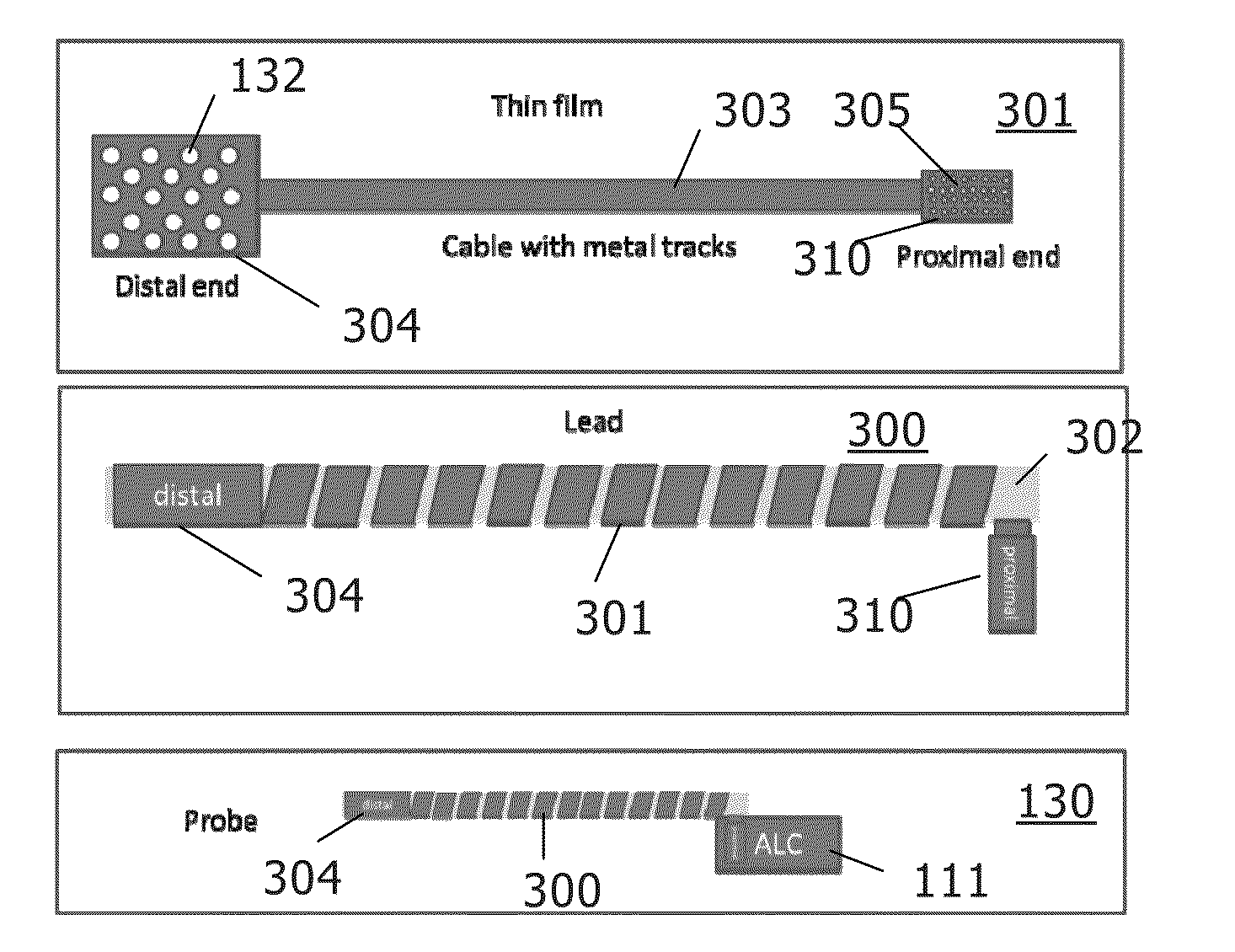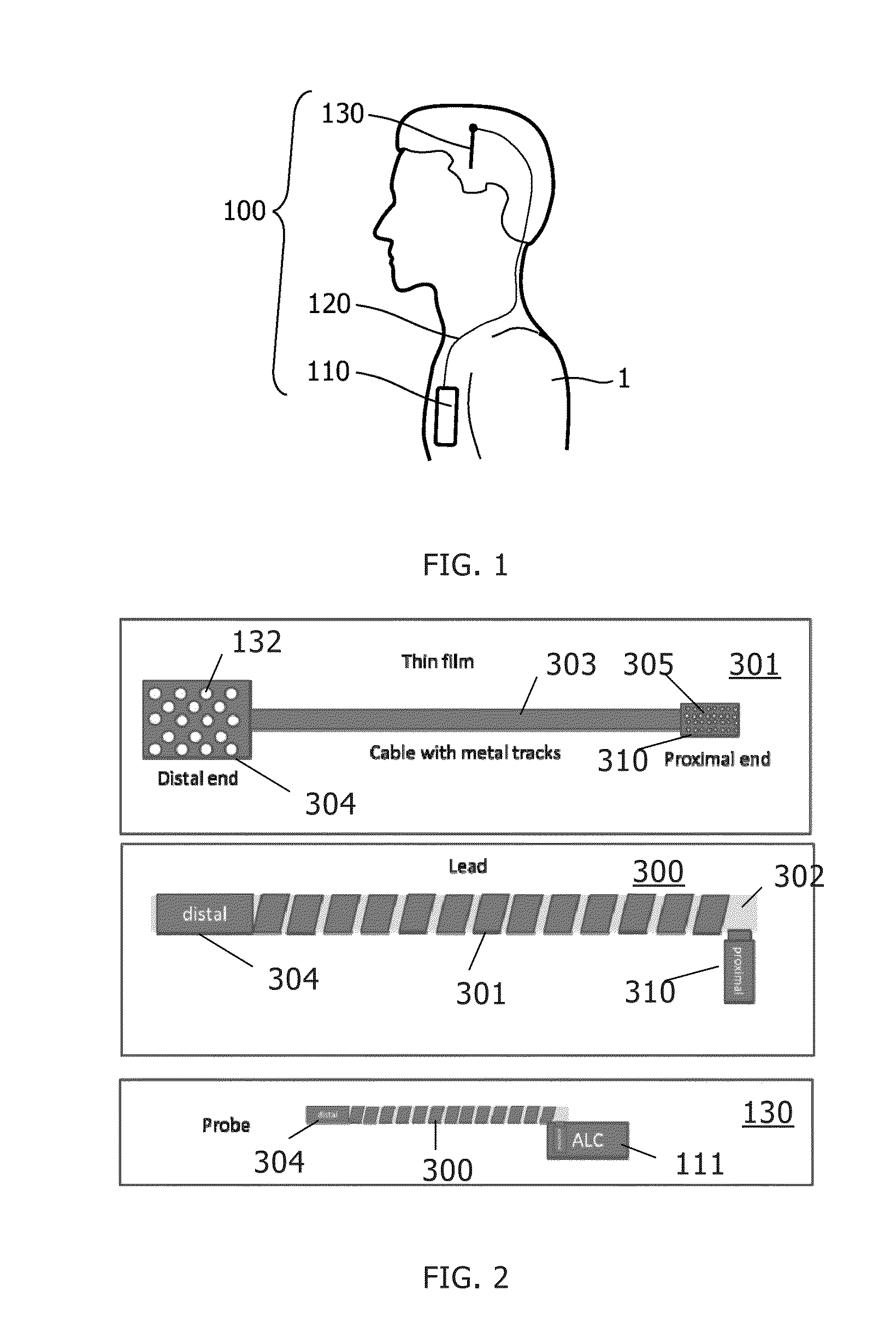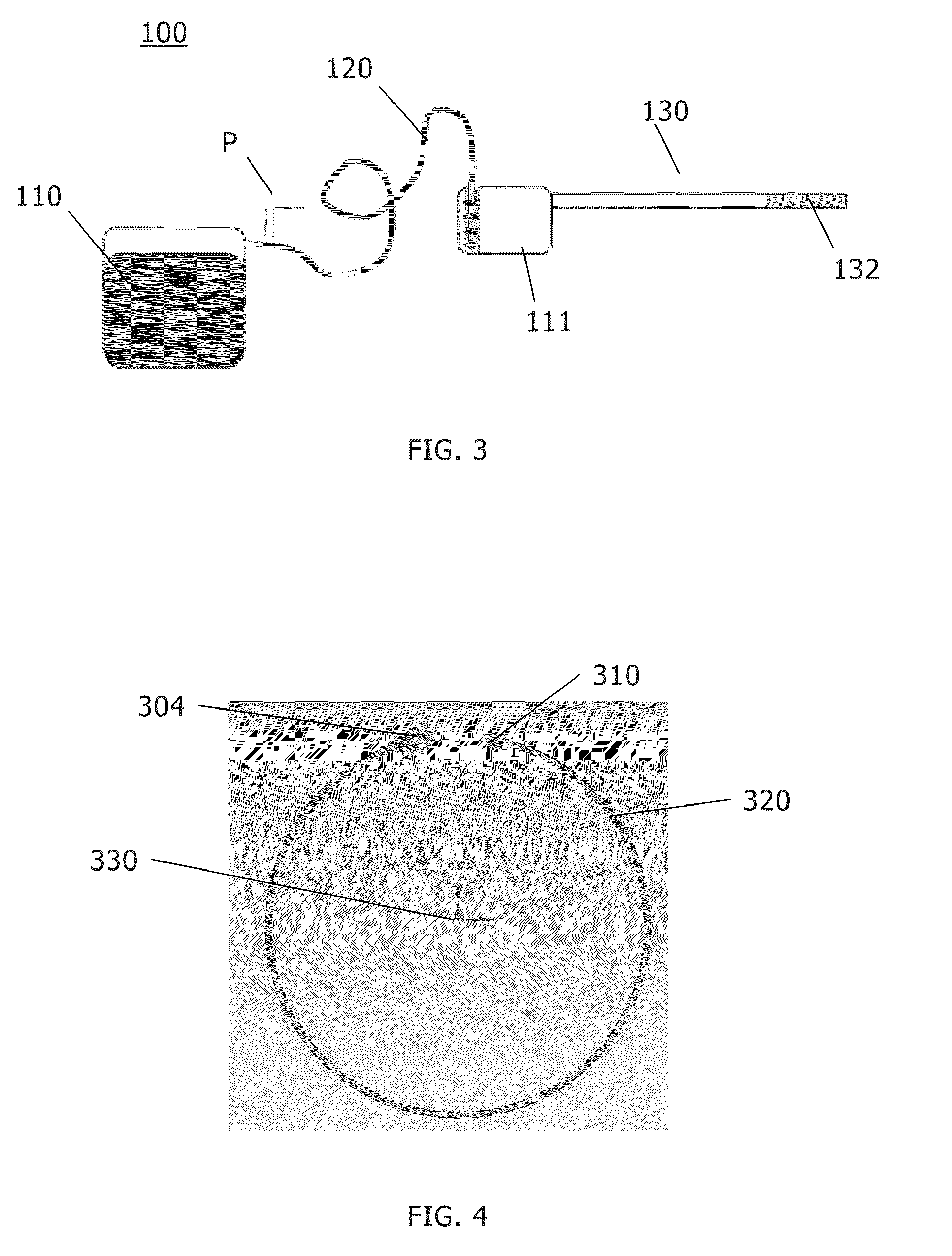Freestanding Thin Film For A System For Neural Applications
a neural application and freestanding technology, applied in the field of thin films, can solve the problems of substantial thin film length, increased length of cable wiring, and increased length of winding, and achieve good protection
- Summary
- Abstract
- Description
- Claims
- Application Information
AI Technical Summary
Benefits of technology
Problems solved by technology
Method used
Image
Examples
Embodiment Construction
[0045]A possible embodiment of a neurostimulation system 100 for deep brain stimulation (DBS) is shown in FIG. 1. The neurostimulation system 100 comprises at least a controller 110 that may be surgically implanted in the chest region of a patient 1, typically below the clavicle or in the abdominal region of a patient 1. The controller 110 can be adapted to supply the necessary voltage pulses. The typical DBS system 100 may further include an extension wire 120 connected to the controller 110 and running subcutaneously to the skull, preferably along the neck, where it terminates in a connector. A DBS lead arrangement 130 may be implanted in the brain tissue, e.g. through a burr-hole in the skull.
[0046]FIG. 2 further illustrates a typical architecture for a Deep Brain Stimulation probe 130 that comprises a DBS lead 300 and an Advanced Lead Connector (ALC) element 111 comprising electronic means to address electrodes 132 on the distal end 304 of the DBS lead 300. The lead 300 comprise...
PUM
 Login to View More
Login to View More Abstract
Description
Claims
Application Information
 Login to View More
Login to View More - R&D
- Intellectual Property
- Life Sciences
- Materials
- Tech Scout
- Unparalleled Data Quality
- Higher Quality Content
- 60% Fewer Hallucinations
Browse by: Latest US Patents, China's latest patents, Technical Efficacy Thesaurus, Application Domain, Technology Topic, Popular Technical Reports.
© 2025 PatSnap. All rights reserved.Legal|Privacy policy|Modern Slavery Act Transparency Statement|Sitemap|About US| Contact US: help@patsnap.com



